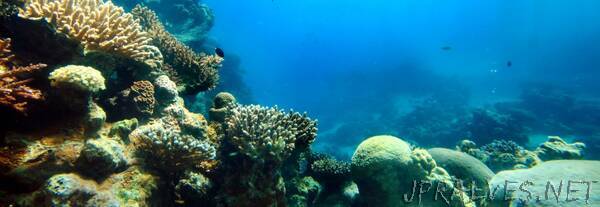
“As reefs face threats from climate change, Florida Tech is exploring 3D printing to potentially help sustain this critical but threatened ocean resource.
Ocean engineering and marine sciences professor Stephen Wood and research students John Carroll, Sydney Goodman, Gabija Karosas, Alexa Langley, August Neier and Katherine Tyson are proposing to use a 3D printer to make coral structures that would then be placed upon large mounds of concrete in the ocean. The goal is to design a production method in which creating artificial coral reefs is accessible and affordable, and using 3D printing would decrease the time to produce artificial corals. The team is working to build a printer that is much larger than common printers on the market, which will allow them to print life-size corals.
To reach their goals, the team assembled a smaller 3D printer to familiarize themselves with the mechanisms and construction of 3D printing. They then designed a full-scale 3D printer to print in ceramic, though there is a future option to print in concrete. Mixing engineering and coral biology, the researchers looked at different 3D-printer parts and filament materials as they would relate to various corals and designs, and they also considered how the printed products would react in the ocean environment. The team also used a sample printer to print small models of corals, which represent the final print concept.
While the printed corals may not look identical to the real thing, they will be designed with an important goal in mind: facilitate coral growth.
“We may print out the base structure of the coral, like an Elkhorn coral, we could print a good majority of that, so when the little polyps adhere, they could grow off of that,” Wood said.
When working on artificial reefs, a significant challenge is the use of potentially toxic materials. Previous structures used to attempt coral growth used waste materials, such as tires and PVC plastic, with the hopes of reusing resources. However, the chemicals from the materials hurt growth in the area and the materials themselves did not provide a large or stable enough surface for microorganisms to thrive. The structures also moved around due to their small size and ended up washing up on shorelines.
Another challenge faced in artificial reef building is the use of smaller, unsecured structures, such as cinder blocks or other building blocks. While the blocks were often attached to larger mats on the seafloor to keep them together, a storm or monsoon that passed by would scatter them across the ocean floor or bury them in the sand, disrupting any existing coral fragments. While the blocks did facilitate some coral growth, storm surges eventually washed it away.
Future project work will include installing electronics and software on the 3-D printer that allow for communications between the motherboard and the electronic components of the printer, as well as getting and updating the bill of materials to account for stoneware clay printing. After that, the team will print simple shapes and patterns out of stoneware clay that will attract living coral and deploy ceramic print into the ocean to test longevity effectiveness in environmental restoration and wave attenuation, a function of the distance traveled by the wave as well as the depth, wavelength and wave height.
Coral reefs are vital habitats for marine life and key indicators of the ocean’s health. These ecosystems provide countless benefits to the ocean and help protect shorelines through wave attenuation. In recent years, coral populations have been impacted by global warming, ocean acidification, coral bleaching, and many other factors. Declining coral populations have placed restoration at the forefront of environmental engineering and marine science. Several artificial reefs have already been deployed for the purpose of replenishing coral reefs, and engineers are continuously discovering new ways to improve existing designs. 3D printing provides promising opportunities to rebuild reefs quickly and efficiently.
“The standard 3D printing has a unique way of doing design,” Wood said. “Every single thing you could think of can potentially be modeled using a 3D printer, so, it extrapolates out of your imagination.””
